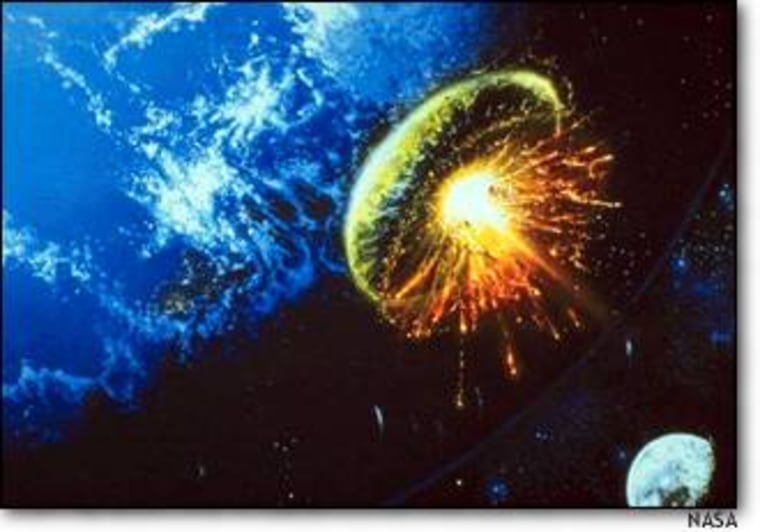After sounding the alarm about a kilometer-wide asteroid, astronomers said Tuesday that further data eliminated the possibility of a catastrophic collision in 2014. This week’s alert followed the up-and-down course that is typical for observations of near-Earth objects.
Asteroid 2003 QQ47 was first observed on Aug. 24, and based on limited data, experts at NASA’s Jet Propulsion Laboratory estimated as of early Tuesday that there was a tiny chance — 1 in 909,000 — that the space rock would smash into Earth on March 21, 2014.
Observations gathered on Monday night, however, allowed astronomers to plot the asteroid’s orbital course more precisely. By Tuesday evening, the risk for 2014 was eliminated. JPL said there was still a 1-in-2.2 million chance that an impact could occur sometime in the next century, but that is far below the “background risk” of a catastrophic collision in any given year.
“We have many asteroids that have residual risks,” Paul Chodas, a research scientist at JPL who specializes in calculating the orbits of near-Earth objects. “This particular one was of interest because it is fairly large, 1.3 kilometers [0.8 mile], and the predicted impact was only 10 years away. Combining those two factors, we raised it to some level of concern.”
The rock was first observed by the Lincoln Near Earth Asteroid Research Program, also known as LINEAR.
At one time, the 2014 encounter was given a rare rating of 1 on the Torino Scale of asteroid and comet threats. But based on the additional observations, the Torino rating was reduced to zero by JPL as well as the NEODyS asteroid-monitoring group in Italy.
“We expect the impact possibilities to go to zero,” Chodas said. “That is the usual scenario.”
If a rock as big as 2003 QQ47 ever were to hit Earth, it could have the effect of millions of Hiroshima-scale atom bombs. Such impacts are thought to have contributed to mass extinctions, including the demise of the dinosaurs 65 million years ago.
Asteroids are chunks of rock left over from the formation of the solar system 4.5 billion years ago. Most are kept at a safe distance from the Earth in the asteroid belt between Mars and Jupiter. But some asteroids trace an orbit that crosses Earth’s own.
In the past several years, programs such as LINEAR have upgraded scientists’ asteroid-detecting capabilities to the point that asteroid alerts are not all that unusual anymore. Astronomers currently are tracking more than 600 near-Earth asteroids wider than a kilometer — and there are likely hundreds more yet to be found. There are thought to be many more smaller near-Earth objects that could create localized damage in the event of a collision.
JPL’s Chodas emphasized that the process of tracking near-Earth objects and refining their orbits can take days, weeks or months.
“We never know orbits very accurately,” he told MSNBC.com. “This asteroid has been seen only for nine days, and here we’re trying to predict its position 10 years in the future. So there are many uncertainties.”
